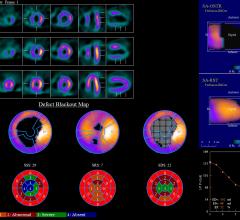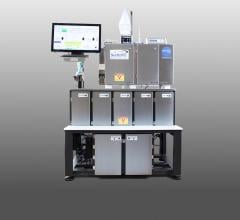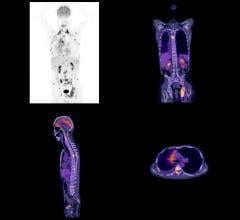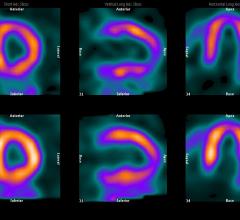
April 29, 2022 — Bristol Myers Squibb announced that the U.S. Food and Drug Administration (FDA) approved Camzyos (mavacamten, 2.5 mg, 5 mg, 10 mg, 15 mg capsules) for the treatment of adults with symptomatic New York Heart Association (NYHA) class II-III obstructive hypertrophic cardiomyopathy (obstructive HCM) to improve functional capacity and symptoms. Camzyos is the first and only FDA-approved allosteric and reversible inhibitor selective for cardiac myosin that targets the underlying pathophysiology of obstructive HCM.
“This is a first-in-class medicine specifically for patients living with symptomatic obstructive HCM,” said Milind Desai, M.D., MBA, director of the Hypertrophic Cardiomyopathy Center and director of clinical operations in Cleveland Clinic’s Heart Vascular & Thoracic Institute. "With this FDA approval, U.S. cardiologists now have a new pharmacological option for eligible patients that targets the underlying pathophysiology of the disease.”
The full U.S. Prescribing Information for Camzyos includes a Boxed WARNING for the risk of heart failure. Camzyos reduces left ventricular ejection fraction (LVEF) and can cause heart failure due to systolic dysfunction. Echocardiogram assessments of LVEF are required prior to and during treatment with Camzyos. Initiation of Camzyos in patients with LVEF <55% is not recommended. Interrupt Camzyos if LVEF is <50% at any visit or if the patient experiences heart failure symptoms or worsening clinical status. Concomitant use of Camzyos with certain cytochrome P450 inhibitors or discontinuation of certain cytochrome P450 inducers may increase the risk of heart failure due to systolic dysfunction; therefore, the use of Camzyos is contraindicated with moderate to strong CYP2C19 inhibitors or strong CYP3A4 inhibitors, and moderate to strong CYP2C19 inducers or moderate to strong CYP3A4 inducers. Because of the risk of heart failure due to systolic dysfunction, Camzyos is available only through a restricted program under a Risk Evaluation and Mitigation Strategy (REMS) called the Camzyos REMS PROGRAM. Please see additional Important Safety Information including Boxed WARNING below.
“This approval builds on decades of cardiovascular leadership and reflects our steadfast commitment to people impacted by cardiovascular disease,” said Samit Hirawat, M.D., executive vice president and chief medical officer, Global Drug Development, Bristol Myers Squibb. “We are proud to bring this first-of-its kind medicine to patients, which may help to address an unmet need in the U.S. in the symptomatic NYHA class II-III obstructive HCM treatment landscape.”
This approval is based on data from the Phase 3 EXPLORER-HCM trial. At baseline, approximately 73% of the randomized patients were NYHA class II and 27% were NYHA class III. The mean LVEF was 74%, and the mean Valsalva left ventricular outflow tract (LVOT) gradient was 73 mmHg. The baseline mean Kansas City Cardiomyopathy Questionaire-23 (KCCQ-23) Clinical Summary Score (CSS) was 71. At Week 30, 37% (n=45/123) of patients taking Camzyos achieved the composite primary endpoint, defined as the proportion of patients who achieved either improvement of mixed venous oxygen tension (pVO2) by ≥1.5 mL/kg/min plus improvement in NYHA class by at least 1 or improvement of pVO2 by ≥3.0 mL/kg/min plus no worsening in NYHA class, versus 17% (n=22/128) treated with placebo. The difference was 19% (95% CI: 9, 30; p=0.0005). Additionally at Week 30, patients receiving Camzyos had greater improvement compared to placebo group across all secondary endpoints, including:
- Mean change from baseline post-exercise LVOT peak gradient [-47 mmHg vs -10 mmHG; -35 difference (95% CI: -43, -28; p<0.0001)]
- Mean change from baseline in pVO2 [1.4 mL/kg/min vs -0.1 mL/kg/min; 1.4 difference (95% CI: 0.6, 2.1; p<0.0006)]
- Number (%) of patients with improvement of NYHA class ≥ 1 [80 (65%) vs 40 (31%); difference of 34% (95% CI; 22%, 45%; p<0.0001)]
- Mean change from baseline in KCCQ-23 † CSS [14 vs 4; difference of 9 (95% CI: 5, 13); p<0.0001]
- Mean change in baseline in KCCQ-23 Total Symptom Score (TSS) (12 vs 5)
- Mean change in baseline in KCCQ-23 Physical Limitations (PL) (15 vs 4)
† The KCCQ-23 CSS is derived from the Total Symptom Score (TSS) and the Physical Limitations (PL) score of the KCCQ-23. The CSS ranges from 0 to 100 with higher scores representing less severe symptoms and/or physical limitations.
Missing data were not imputed to summarize the baseline and change from baseline to Week 30 values. Difference in mean change from baseline between treatment groups was estimated using a mixed model for repeated measures.
In the EXPLORER-HCM trial, adverse reactions occurring in >5% of patients and more commonly in the Camzyos group than in the placebo group were dizziness (27% vs 18%) and syncope (6% vs 2%). Mean (SD) resting LVEF was 74% (6) at baseline in both treatment groups. Mean (SD) absolute change from baseline in LVEF was -4% (8) in the Camzyos group and 0% (7) in the placebo group over the 30-week treatment period. At Week 38, following an 8-week interruption of trial drug, mean LVEF was similar to baseline for both treatment groups. Additionally, 7 (6%) patients in the Camzyos group and 2 (2%) patients in the placebo group experienced reversible reductions in LVEF to <50% (median 48%: range 35-49%) while on treatment. In all 7 patients treated with Camzyos, LVEF recovered following interruption of Camzyos.
“The approval of Camzyos represents a significant milestone for appropriate symptomatic obstructive HCM patients and their families, who have long awaited a new treatment option for this chronic and progressive disease,” said Anjali T. Owens, MD, Medical Director of the Center for Inherited Cardiac Disease and an Assistant Professor of Medicine at the Perelman School of Medicine at the University of Pennsylvania. “As a lead U.S. investigator on the EXPLORER-HCM study, I’m grateful to the patients and their families whose participation in the trial played a key role in this approval.”
Bristol Myers Squibb offers various programs and resources to address the needs of patients and caregivers, and provide support that allows for access to therapies, including Camzyos. For additional information, call 855-Camzyos (855-226-9967) 8 am to 11 pm ET, Monday through Friday.
About EXPLORER-HCM
The EXPLORER-HCM Phase 3 trial was a double-blind, randomized, placebo-controlled, parallel group trial that enrolled a total of 251 adult patients with symptomatic (NYHA class II or III), obstructive hypertrophic cardiomyopathy. All participants had measurable left ventricular ejection fraction (LVEF) ≥55% and left ventricular outflow tract (LVOT) peak gradient (resting and/or provoked) ≥50 mmHg at baseline. Patients on dual therapy with beta blocker and calcium channel blocker treatment or monotherapy with disopyramide or ranolazine were excluded. Patients with a known infiltrative or storage disorder causing cardiac hypertrophy that mimicked obstructive HCM, such as Fabry disease, amyloidosis, or Noonan syndrome with left ventricular hypertrophy, were also excluded. Patients were randomized in a 1:1 ratio to receive either a starting dose of 5 mg of Camzyos or placebo once daily for 30 weeks. The dose was periodically adjusted to optimize patient response (decrease in LVOT gradient with Valsalva maneuver) and maintain LVEF ≥50%. Treatment assignment was stratified by baseline disease severity NYHA functional class (NYHA class II-III), baseline use of beta blockers (yes or no), and type of ergometer (treadmill or exercise bicycle). The majority of patients in both arms of EXPLORER-HCM were on background therapy including 75% on beta blockers, and 17% on calcium channel blockers.
The primary endpoint for EXPLORER-HCM was a composite functional endpoint, assessed at 30 weeks, and was defined as the proportion of patients who achieved either improvement of mixed venous oxygen tension (pVO2) by ≥1.5 mL/kg/min plus improvement in NYHA class by at least 1 or improvement of pVO2 by ≥3.0 mL/kg/min plus no worsening in NYHA class. A greater proportion of patients met the primary endpoint at Week 30 in the Camzyos group compared to the placebo group (37% vs 17%, respectively, difference of 19% (95% CI: 9, 30; p=0.0005). The treatment effects of Camzyos on LVOT obstruction, functional capacity, and health status were assessed by change from baseline through Week 30 in post-exercise LVOT peak gradient, change in pVO2, proportion of patients with improvement in NYHA class, Kansas City Cardiomyopathy Questionnaire-23 (KCCQ-23) Clinical Summary Score (CSS), and Hypertrophic Cardiomyopathy Symptom Questionnaire (HCMSQ) Shortness of Breath (SoB) domain score. At Week 30, patients receiving Camzyos had greater improvement compared to placebo group across all secondary endpoints.
For more information: https://www.bms.com/
VIDEO: Septal Ablation to Treat Hypertrophic Cardiomyopathy — Interview with Carey Kimmelstiel, M.D.


 March 25, 2025
March 25, 2025 









